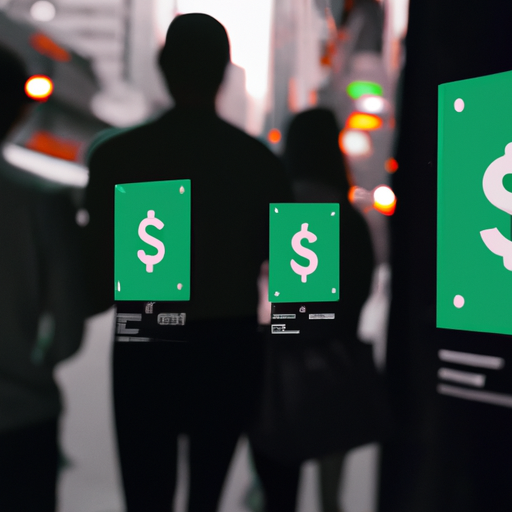
Effective Strategies for Upselling to Increase Revenue
Upselling is a powerful strategy that businesses can use to increase their revenue. By encouraging customers to purchase additional products or services, companies can maximize their profits and create a win-win situation for both the business and the customer. In this section, we will explore some effective strategies for upselling that can help businesses unlock profitable opportunities.
One of the most important aspects of successful upselling is understanding your customers. By knowing their needs and preferences, you can offer them relevant and valuable upgrades or add-ons. This requires gathering data and analyzing customer behavior to identify patterns and trends. By doing so, you can tailor your upselling offers to each individual customer, increasing the chances of a successful upsell.
Another effective strategy for upselling is to create bundles or packages that offer a combination of products or services at a discounted price. This not only provides customers with added value but also encourages them to spend more. For example, a telecommunications company could offer a package that includes internet, cable, and phone services at a lower price than if each service was purchased separately. By bundling products or services, businesses can increase their average order value and generate more revenue.
Timing is also crucial when it comes to upselling. It’s important to strike the right balance between offering an upsell too early or too late in the customer’s journey. Ideally, you want to present the upsell when the customer is already engaged and interested in making a purchase. For example, if a customer is browsing a clothing website and has added a few items to their cart, this could be the perfect time to offer them a discount on a related item or suggest a higher-priced alternative. By timing your upsell correctly, you can increase the chances of a successful conversion.
Personalization is another key factor in effective upselling. Customers appreciate when businesses take the time to understand their unique needs and preferences. By personalizing your upselling offers, you can make them more compelling and relevant to each individual customer. For example, an online retailer could use data from previous purchases to recommend similar products that the customer might be interested in. By tailoring your upselling offers to each customer, you can create a personalized shopping experience that increases the likelihood of a successful upsell.
Lastly, it’s important to make the upselling process seamless and hassle-free for customers. The goal is to make them feel like they are getting a great deal without any pressure or inconvenience. This can be achieved by clearly communicating the benefits of the upsell, providing easy-to-understand pricing information, and offering a hassle-free checkout process. By removing any barriers or friction points, you can increase the chances of a successful upsell and create a positive customer experience.
In conclusion, effective upselling strategies can help businesses maximize their revenue and unlock profitable opportunities. By understanding your customers, creating bundles or packages, timing your upsells correctly, personalizing your offers, and making the process seamless for customers, you can increase the chances of a successful upsell. Remember, upselling is not about pushing customers to spend more, but rather about providing them with added value and enhancing their overall experience. By implementing these strategies, businesses can create a win-win situation that benefits both the business and the customer.
Identifying and Targeting High-Value Customers for Upselling

Maximizing Upsell Revenue: A Comprehensive Guide to Profitable Opportunities
Identifying and Targeting High-Value Customers for Upselling
Upselling is a powerful strategy that can significantly boost your revenue and profitability. By offering customers additional products or services that complement their initial purchase, you not only increase the value of their transaction but also enhance their overall experience. However, to maximize the potential of upselling, it is crucial to identify and target high-value customers who are most likely to be receptive to these offers.
One effective way to identify high-value customers is by analyzing their purchasing behavior. Look for customers who have made multiple purchases or have spent a significant amount of money with your business. These customers have already demonstrated their loyalty and trust in your brand, making them more likely to be open to additional offers.
Another important factor to consider when identifying high-value customers is their level of engagement with your business. Customers who regularly interact with your brand through social media, email subscriptions, or loyalty programs are more likely to be receptive to upselling offers. Their engagement indicates a strong interest in your products or services, making them ideal candidates for upselling.
Segmenting your customer base can also help you target high-value customers more effectively. By dividing your customers into different groups based on their demographics, preferences, or purchase history, you can tailor your upselling offers to their specific needs and interests. For example, if you have a group of customers who frequently purchase high-end products, you can create upselling offers that showcase premium or exclusive items.
Personalization is key when targeting high-value customers for upselling. By understanding their preferences and past purchases, you can create offers that are highly relevant and appealing to them. Use data analytics and customer relationship management tools to gather insights about your customers and their buying patterns. This information will enable you to craft personalized upselling offers that resonate with each customer individually.
Timing is also crucial when it comes to upselling. Presenting an upselling offer at the right moment can significantly increase its chances of success. For example, offering an upgrade or add-on during the checkout process can capture the customer’s attention while they are already in a buying mindset. Similarly, sending personalized upselling offers shortly after a customer’s initial purchase can capitalize on their positive experience and increase the likelihood of a repeat purchase.
To effectively target high-value customers for upselling, it is essential to communicate the value and benefits of the additional products or services you are offering. Highlight how these offerings can enhance the customer’s experience or solve a problem they may have. Use persuasive language and compelling visuals to convey the value proposition effectively.
Finally, it is crucial to monitor and evaluate the success of your upselling efforts. Track the conversion rates and revenue generated from your upselling offers to identify what strategies and tactics are most effective. Continuously refine and optimize your upselling approach based on these insights to maximize your revenue potential.
In conclusion, identifying and targeting high-value customers is a critical step in maximizing upsell revenue. By analyzing purchasing behavior, segmenting your customer base, personalizing your offers, and timing them strategically, you can increase the effectiveness of your upselling efforts. Remember to communicate the value and benefits of your upselling offers and continuously evaluate and refine your approach. With a well-executed upselling strategy, you can unlock profitable opportunities and enhance the overall customer experience.
Implementing Personalization Techniques to Maximize Upsell Revenue
Implementing Personalization Techniques to Maximize Upsell Revenue
In today’s competitive business landscape, finding ways to increase revenue is crucial for any company’s success. One effective strategy is to focus on upselling, which involves offering customers additional products or services that complement their initial purchase. By implementing personalization techniques, businesses can maximize upsell revenue and create a more tailored and satisfying customer experience.
Personalization is the key to connecting with customers on a deeper level. It involves understanding their preferences, needs, and purchasing behavior to offer them relevant and valuable upsell options. By leveraging customer data and employing advanced analytics, businesses can gain insights into individual customer preferences and create personalized upsell offers that are more likely to resonate with them.
One effective personalization technique is to use customer segmentation. By dividing customers into different groups based on their demographics, purchasing behavior, or preferences, businesses can tailor their upsell offers to each segment’s specific needs. For example, a clothing retailer can offer personalized upsell recommendations based on a customer’s previous purchases or browsing history. By understanding a customer’s style preferences, the retailer can suggest complementary items that the customer is more likely to be interested in.
Another personalization technique is to leverage real-time data. By tracking customer behavior in real-time, businesses can identify opportunities for upselling and act on them immediately. For instance, an online travel agency can use real-time data to offer customers additional services such as airport transfers or travel insurance at the moment they are booking their flights. By presenting these upsell options at the right time, businesses can increase the chances of customers accepting them.
Furthermore, businesses can use personalized recommendations to drive upsell revenue. By analyzing customer data and employing machine learning algorithms, businesses can offer customers personalized product recommendations that align with their preferences and needs. For example, an e-commerce platform can suggest complementary products based on a customer’s previous purchases or browsing history. By presenting these recommendations in a friendly and non-intrusive manner, businesses can encourage customers to explore additional products and increase their overall purchase value.
Implementing personalization techniques also requires businesses to have a seamless and integrated customer experience across different channels. Customers expect a consistent experience whether they are interacting with a business through its website, mobile app, or physical store. By integrating customer data and preferences across these channels, businesses can offer personalized upsell options that are relevant and consistent with the customer’s previous interactions.
To successfully implement personalization techniques, businesses need to invest in the right technology and infrastructure. This includes advanced analytics tools, customer relationship management systems, and data integration capabilities. By leveraging these technologies, businesses can effectively collect, analyze, and act on customer data to create personalized upsell offers that drive revenue growth.
In conclusion, implementing personalization techniques is essential for maximizing upsell revenue. By understanding customer preferences, leveraging real-time data, and offering personalized recommendations, businesses can create tailored upsell offers that resonate with customers. Additionally, ensuring a seamless and integrated customer experience across different channels is crucial for success. By investing in the right technology and infrastructure, businesses can unlock the full potential of personalization and drive profitable upsell opportunities.


